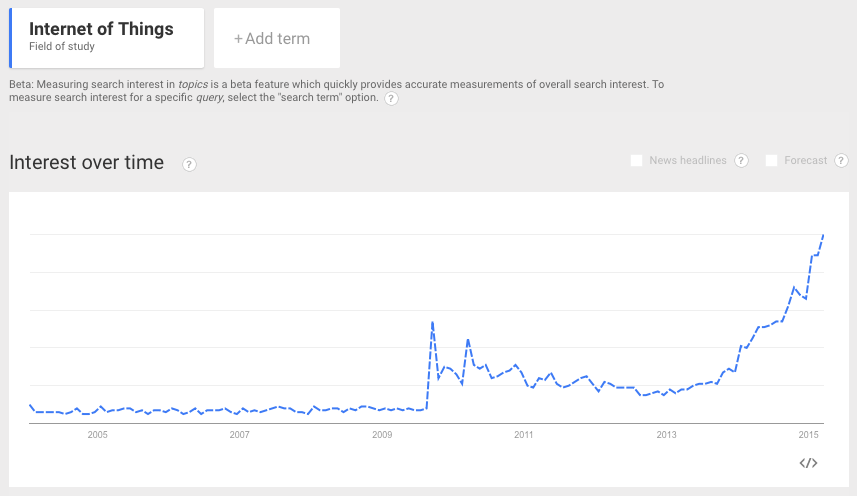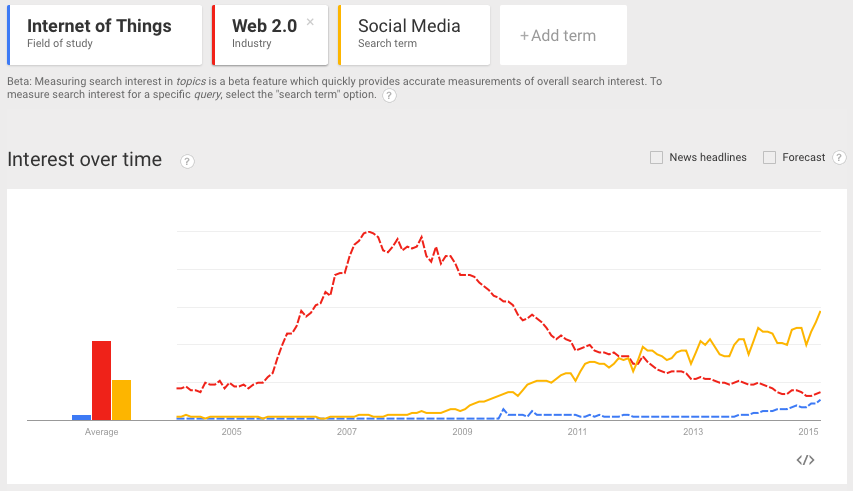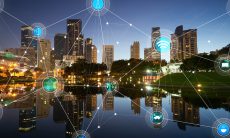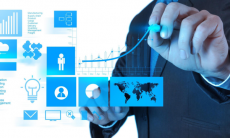Gartner and others project that the Internet of Things (IoT) will have close to 30 billion devices interconnected in 5 years. While we wait for technology and standards to catch up and allow that future to happen, we may be leaving money on the table in the present while missing much simpler opportunities to connect “things” to the Internet. Read on to find more about the difference between the IoT and the Internet of things.
It seems rare these days to go through any newsfeed on technology without seeing “the Internet of Things” (IoT) mentioned a few times. For those still wondering what that is, here’s its Wikipedia definition as of this writing:
The Internet of Things (IoT) is the network of physical objects or “things” embedded with electronics, software, sensors and connectivity to enable it to achieve greater value and service by exchanging data with the manufacturer, operator and/or other connected devices. Each thing is uniquely identifiable through its embedded computing system but is able to interoperate within the existing Internet infrastructure. (…) According to Gartner, Inc. (a technology research and advisory corporation), there will be nearly 26 billion devices on the Internet of Things by 2020. ABI Research estimates that more than 30 billion devices will be wirelessly connected to the Internet of Things (Internet of Everything) by 2020.
It’s becoming bigger and bigger, and many people are paying attention to it, as you can see in this Google Trends snapshot (the vertical axis is just a normalized scale up to 100):

However, to put things into perspective, this is how the IoT compares to buzzwords of the recent past:

While we wait for 2020 to come, all the glitter coming from the IoT potential may be keeping us from seeing something more immediate that’s happening right now in front of us, and often overlooked: the Internet of things, in plain English, no acronym, and no complex sensors and protocols required. In other words, all sorts of “things” are being impacted by the Internet of the here and now, as opposed to the Internet of the future. Here, I’m using the regular definition of “thing”, as the ones used by the online Merriam-Webster dictionary:
- an object whose name is not known or stated
- an object, animal, quality, etc., of any kind
- a particular event, occurrence, or situation
The fact that the Internet makes it easier to connect not only people to information, but also people to people and information to information, much of the physical and non-physical world is being pulled into the Internet. And we are not talking only about current “things:” as anybody being found by friends who we met as a child decades ago via Facebook or LinkedIn can attest, our past has never been so present as it is now. From old TV commercials, to baseball cards, to pictures from a time long forgotten, many aspects of our early years are resurfacing daily in our lives.
When we look at our social media streams and mobile device notifications, what you see is a mix of things past and present, important and mundane, big and small. The one common trait in all of them is: they flow towards our attention and then away from it, as a real world stream, a small “river” of information that runs by us.
In fact, our perception of the world has always been based on incoming and outgoing streams – the Internet is just catching up with that pattern. Early websites, email, and document repositories all relied on a snapshot pattern: you freeze the world still and keep it like that for a while, until the next update comes. In the natural world, our sensors (or human senses) just capture information as streams of things coming our way: light, sound, touch, smells and tastes.
Once you realize that 1) “things” is actually everything, not only specialized devices connected through complex protocols and 2) our natural way of consuming “things” is via streams, you start to notice how much we are underplaying the potential behind the Internet of things. There are many “things” that could be connected and streaming right now, such as:
- Non-tangible constructs, such as a bank or credit card account, are things. Having information about it coming to me in statements, electronic or not, is like having a website that’s updated once a month. It’s unnatural. As those accounts change state, they create a stream that I should be able to consume “as it happens”, if I so choose. This way, credit card fraudulent transactions could be flagged at the precise moment they happen, instead of days after, when the damage is already done.
- Every life form is a thing. The city of Melbourne made the news recently when they gave 70,000 trees email addresses so that people could report damaged branches, and, to their surprise, people started sending love letters to the trees. Thinking about it, they could do the same with non-animated things too, such as street addresses, electricity poles and traffic lights.
- Every event is a thing. You can relive moment by moment the Apollo 11 mission in We Choose the Moon, or Darwin’s Beagle voyage via tweets. I was gladly surprised to learn this week the ship name, departure and arrival dates and places, plus all family member names for when the maternal side of my family immigrated from Japan to Brazil back in 1933 on this website.
- News, ideas and thoughts are things. From the old MemeTracker site to Google Trends to Twitter Trending Topics, you can roughly follow their life cycle.
It’s time to rethink the way we enable things to be integrated with the Internet and its users. There’s an enormous untapped potential there, and unleashing it will deliver significant value much before 2020 arrives.




